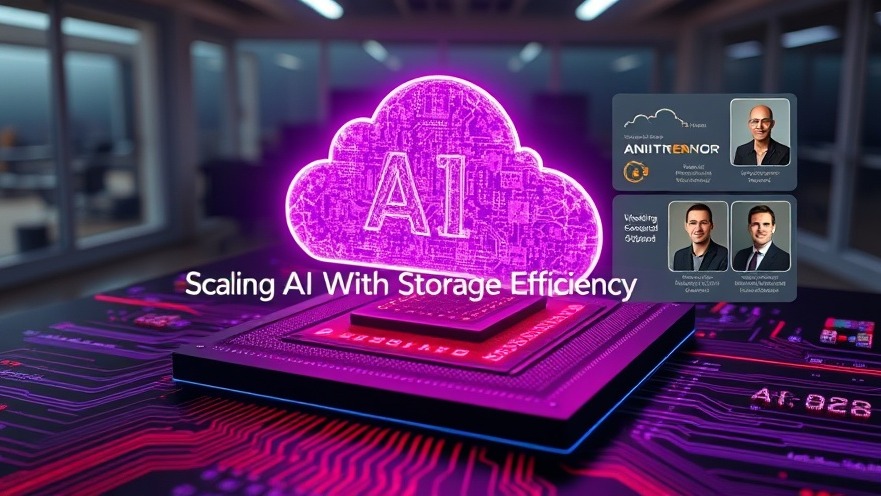
Unlocking Scalable AI: The Hidden Key Lies in Data Storage
The race for artificial intelligence (AI) capabilities is in full swing among enterprises, but many face a critical bottleneck that is often overlooked: inefficient data storage infrastructure. As powerful GPUs and sophisticated AI models capture the spotlight, the backbone of AI scalability is seldom discussed—the method of storing, moving, and managing data. Recent insights reveal that an enterprise's success in AI implementation heavily relies on an optimized data storage framework.
Why Data Storage is an AI Game Changer
According to a report from IDC, approximately 80% of global data is expected to be unstructured by 2025. This unstructured data, which includes formats such as text, images, videos, and more, is integral for training advanced AI models, especially generative AI systems. Ohio State University recently highlighted the necessity of processing unstructured data to make it suitable for AI applications. This emphasizes that ensuring data readiness is as crucial as developing the AI models themselves.
Shifting Perspectives: Data as a Strategic Asset
A recent episode of the Emerj ‘AI in Business’ podcast explores a vital framework aimed at improving the data pipeline necessary for successful AI implementation. Shawn Rosemarin, VP of R&D in Customer Engineering at Pure Storage, emphasizes the need for enterprises to reframe their understanding of data storage. Organizations should view storage not just as a backend utility, but as a vital, strategic asset poised to enhance AI endeavors. As companies adopt this perspective, they can leverage high-throughput, scalable architectures that are equipped for modern AI demands.
A Three-Step Framework to Data Storage Adoption
In his discussion, Rosemarin outlines a comprehensive three-part approach for organizations looking to fine-tune their data storage systems:
Step 1 – Audit and Centralize Data for AI Readiness: Create a unified data foundation by auditing company assets, migrating to scalable storage solutions, and connecting disparate data sources.
Step 2 – Build a Compliant, Metadata-Driven Pipeline: Secure your AI infrastructure by enriching data with relevant context, implementing access controls, and ensuring real-time governance.
Step 3 – Maximize ROI on Infrastructure with Performance Alignment: Drive measurable business value from AI operations by minimizing GPU idle time and engineering systems for comprehensive workload management.
The Future of AI Driven by Smart Storage Solutions
As the landscape of AI continues to evolve, an understanding of data storage becomes paramount. Organizations that invest in a compliant, efficient data pipeline will find themselves better positioned to maximize the potential of their AI initiatives. The adoption of advanced storage solutions creates pathways for enhancing business outcomes, reducing costs, and improving overall performance.
Call to Action
For business owners keen on harnessing the benefits of AI, now is the time to evaluate your data infrastructure. Transitioning from a suboptimal storage setup to a strategic, high-performance data pipeline could be the deciding factor in realizing the full capabilities of AI in your organization. Embrace data readiness and watch your AI strategies flourish.
 Add Row
Add Row  Add
Add 





 Add Row
Add Row  Add
Add 


Write A Comment